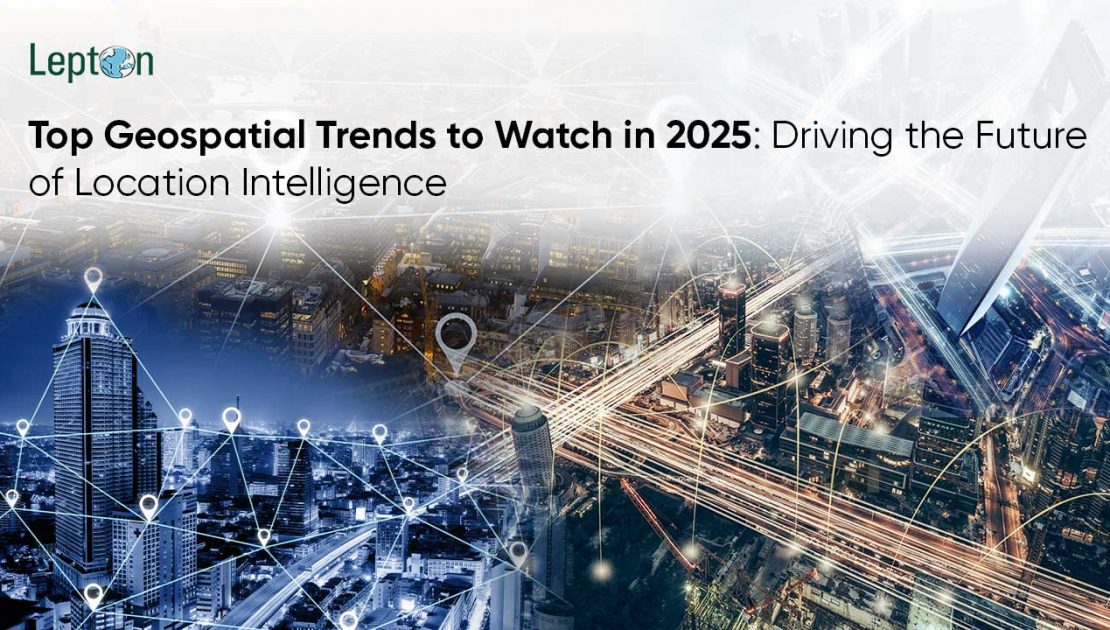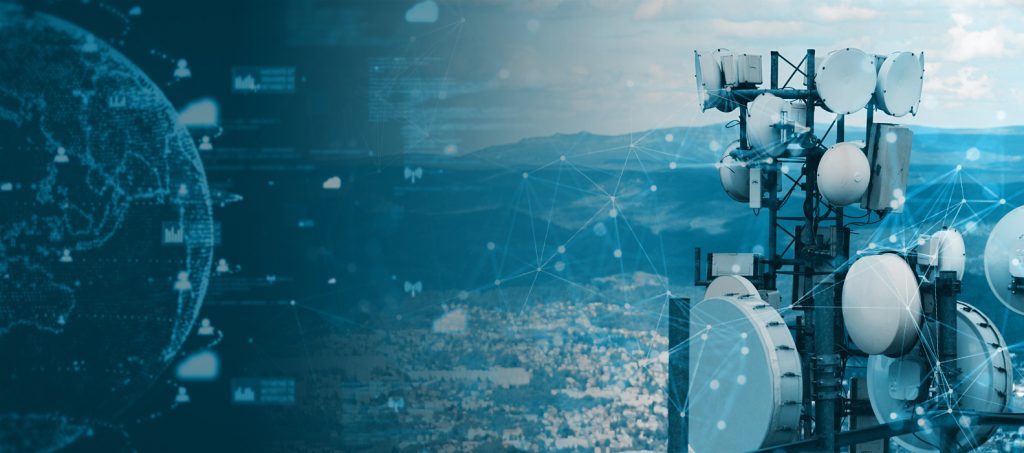There’s a reason why legacy methods don’t cut out for today’s time. With data becoming the biggest commodity for insight and subsequent product offerings, archaic methods simply can’t keep up with the demand of new age location intelligence. From building customized offerings for audiences to powering smarter cities and seamless telecom networks to optimizing supply chains, geospatial intelligence now drives the most foundational operations in 2025.
What was once limited to map-making and surveying a location is now a multidimensional, real-time system capable of analyzing complex spatial patterns. With rapidly evolving technologies, modern geospatial intelligence is set to redefine how we collect, analyze, and apply geospatial data.
Let’s take a look at how these geospatial/gis trends in 2025 that directly influencing location intelligence strategies, industries, policies and most importantly, customer experiences.
-
The Rise of AI-Powered Location Intelligence
AI and machine learning programs are playing a pivotal role in transforming traditional GIS platforms. Over the course of the past three years especially, the infusion of AI to analyze spatial data has opened more opportunities for businesses than possible earlier.
With AI-driven location intelligence, businesses can now:
- Predict traffic congestion and adjust navigation routes in real-time.
- Know more about a location’s affluence and buying patterns.
- Track assets and logistics fleets with anticipatory maintenance models.
- Enable automated network planning for telecom operators, optimizing 5G rollout based on signal demand patterns.
AI not only helps interpret vast amounts of geospatial data but also reveals predictive insights that were previously difficult to access. With predictive analytics capabilities, intelligent automation ensures location data helps the companies with smart investment.
-
Integration of 3D Geospatial Data & Digital Twins
Another prominent use of geospatial data is to create hyper-detailed models of urban infrastructure. This is especially impactful in sectors like real estate development, utilities, 5G network rollout and smart city planning.
Digital twins, created using 3D spatial data, simulate real-world assets and environments in a virtual space. Urban planners can visualize how changes in infrastructure might impact traffic, drainage, or energy consumption before breaking ground. Similarly, telecom providers can simulate tower placement and signal propagation in 3D environments to enhance network coverage. This is especially handy when planning for network coverage, interference, and capacity planning.
By integrating GIS with BIM (Building Information Modeling), digital twins offer a unified, spatially accurate view of assets which also helps in keeping the tab on inventory.
-
Satellite Data Transformation
High-resolution satellite imagery and drone data collection are reaching new levels of accessibility and precision. The ability to gather geospatial data from aerial platforms is empowering organizations to monitor, map, and manage areas with high frequency and accuracy.
Key advantages include:
- Real-time terrain analysis for environmental monitoring and disaster response.
- Faster auditing of telecom towers, pipelines, and utility networks.
- Detailed imagery for agricultural land health assessments and forest management.
This evolving geospatial technology with detailed 3D maps is making it easier to turn aerial data into actionable insights without relying solely on ground surveys.
-
Indoor Mapping and Micro-Location Services
While traditional GIS focuses on outdoor environments, a significant shift toward indoor mapping is also gaining traction. Large venues such as airports, malls, hospitals, college campuses and corporate parks are embracing micro-location services to enhance navigation and operations. This is very helpful when planning on indoor wi-fi coverage keeping in mind the building layout, the numbers of routers used, the materials that degrade signal strength and other factors.
Use cases include:
- Navigation apps that guide visitors through complex indoor layouts.
- Footfall heatmaps that help retailers optimize product placements and staff availability.
- Emergency evacuation mapping in real-time during critical events.
These benefits of location intelligence are especially helpful in consumer-centric sectors where precision is key.
-
Geospatial Cloud and Real-Time GIS
The move toward cloud-based GIS platforms is enabling organizations to manage vast volumes of spatial data with increased efficiency and flexibility with anywhere access facility. Real-time geospatial analysis provides centralized command to the stakeholders to plan their services to its expanding userbase.
Cloud GIS offers:
- Immediate data synchronization from IoT sensors, mobile apps, and satellites.
- Scalability for large datasets used in telecom, transportation, and public safety.
- Collaboration across teams, geographies, and time zones.
Whether it’s responding to a natural disaster or monitoring telecom outages, real-time GIS solutions are proving critical for operational continuity and rapid decision-making.
-
Industry Applications: Telecom, Smart Cities, and Beyond
You might have come across many thought leadership programs highlighting a keen drive towards smart city ecosystems. And this is efficiently achieved through the availability of location insight powering one such venture.
In telecom, geospatial platforms support:
- Fiber-to-the-home (FTTH) planning
- 5G rollout optimization
- Signal strength visualization and network outage detection.
In smart cities, geospatial tools facilitate:
- Traffic flow simulations
- Utility and energy optimization
- Public safety monitoring
- Smart Disaster Management Response
For retail and logistics, location analytics drive:
- Optimal site selection based on demographic data.
- Last-mile delivery route optimization
- Real-time tracking of supply chain movements
Across the board, location intelligence is helping businesses achieve better efficiency, customer engagement, and cost savings.
-
Challenges & Data Privacy in Geospatial Evolution
As geospatial systems become more embedded in everyday life, concerns around privacy and data ethics are becoming more relevant. Some of the key challenges include:
- Secure data storage and transfer protocols.
- Transparent use of location tracking to ensure user trust.
- Adherence to data governance laws, especially for platforms offering location-based services.
As GIS continues to evolve its application, businesses are expected to invest more in securing spatial data and building ethical frameworks around its usage.
What’s Next in Geospatial Innovation?
Looking beyond 2025, geospatial data continues to capture the imagination of current and future stakeholders with several exciting developments on the horizon. These include:
- Augmented Reality (AR) maps that allow users to experience layered spatial data in real time.
- Edge computing for GIS, bringing faster processing to IoT-enabled devices and reducing latency.
- Autonomous vehicles and drones navigating through real-time geospatial inputs.
These future-focused geospatial technology trends will make mapping more immersive, intuitive, and autonomous, unlocking opportunities in mobility, tourism, and automation.
Conclusion: The Strategic Advantage of Staying Ahead
Ever since massive upgrade in tech, this year has seen geospatial evolution become a business imperative. Staying updated on geospatial trends ensures that organizations can make faster decisions, manage resources more effectively, and deliver better customer experiences. From AI-driven analytics to real-time indoor positioning systems, the future of location intelligence is smarter, sharper, and more scalable.
If you’re in the launching phase of your expansive scaling plans, reach out to explore how Lepton Software’s smart geospatial solutions can empower your digital transformation journey.

